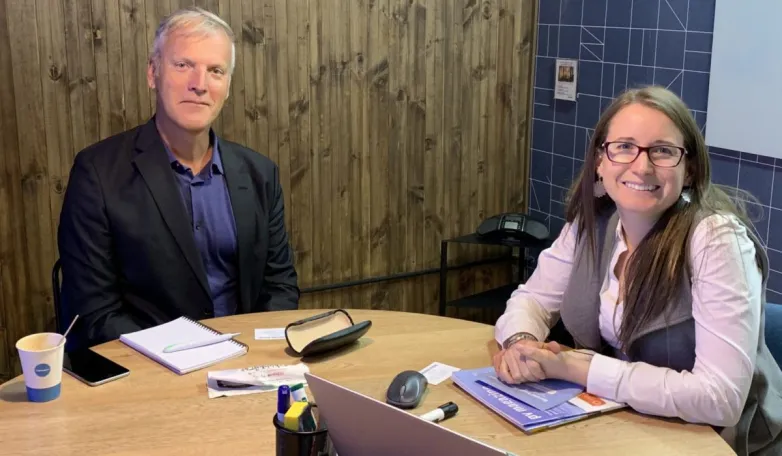Building a successful renewables auction in Colombia
Sep 3, 2019 05:35 PM ET
- pv magazine publisher Eckhart Gouras spoke to Carolina Obando, regulatory coordinator at renewable energy association SER Colombia, to discuss the country’s first renewable energy auction. The delayed tender promises to boost a solar industry with a 4.3 GW pipeline.

pv magazine’s Eckhart Gouras sat down on Friday in downtown Bogotá to talk to renewable energy association SER Colombia about the nation’s first clean energy auction.
The interview with SER regulatory coordinator Carolina Obando took place at the association’s WeWork office and the fact SER uses WeWork is indicative of two things. Firstly, the association is only just over three years old, having been founded in March 2016; and secondly, the renewable energy sector is in a rapid state of development, especially when it comes to solar. Of the 6.2 GW of renewables generation capacity in the Colombian pipeline, 4.3 GW is solar versus 1.8 GW of wind projects. Headed by Germán Corredor, SER Colombia’s 25-strong membership is growing and the flexible office space offered by WeWork is an obvious solution. That membership is set to expand further once the country’s first renewable energy auction is finally completed.
As Obando explained, the auction system was only half baked when the Unidad de Planeacion Minero Energetica – a department of the country’s Ministry of Mines and Energy charged with carrying out the exercise – attempted to conduct the clean energy tender at the end of February. The organizing body ended up selecting no projects and postponing the process until June. That date was then pushed back to September 30, and now to next month.
Multiple off-takers
Obando explained the unique nature of the Colombian renewable energy auction process. The aim of the procurement round is to match renewable energy suppliers with domestic electricity trading and distribution companies which will act as off-takers of the power generated. To match supply side with numerous demand-side entities – rather than a single, state-owned utility – is no easy matter. When the intended electricity off-takers must be incentivized to commit to the process, holding an auction becomes even more demanding.
According to Obando, the incentives were simply not there in February. Hard work by SER Colombia and the ministry led to substantial improvements in the auction regime, leading to optimism about the results this fall. Obando envisages another auction taking place next year and with 4.3 GW of solar in the pipeline, the results should catapult the Colombian PV market into a leading role in South America.
One of the changes made to the auction guidelines was an extension of power purchase agreement terms to 15 years, rather than the initial 12. That development was important to SER’s membership, which includes leading global developers, often in joint ventures with Colombian firms. In fact, for SER’s members it was more important to establish a 15-year term than to switch the currency from Colombian pesos. Being paid in pesos carries significant risk, but on the macro side the Colombian economy has made great strides to make the specter of currency devaluation less likely in the years ahead.
Green energy mandate
The most promising amendment to the auction rules, however, was the move to mandate local authorities to purchase clean energy even if they do not participate in the tender. Local governments are not against renewable energy per se but are risk averse and shy away from new energy generation companies in favor of established power suppliers.
However, the minister of mines and energy, Maria Fernanda Suárez, is a risk taker ready to shake up the status quo to develop the electricity market and the country’s share of renewables, according to Obando. The short-term goal is to reach 1.5 GW of renewables capacity by 2022 – a big leap from for a nation with only 80 MW of installed capacity at present. Why 2022? That is the final year of president Iván Duque Márquez’ term.
To participate in the auction, clean energy projects must be registered with the Unidad de Planeacion Minero Energetica and key technical issues must be resolved, the most challenging of which is securing connection point approval. As Obando explained, the country’s grid does not cover vast swathes of eastern Colombia and needs to be improved and expanded. That represents a bottleneck for developers keen to build PV plants. As such, connection point approval is a “must have” for developers wishing to prevail in next month’s tender. Once a bidder has secured a contract, other requirements kick in, including environmental and social permitting, the latter concerning local employment.
Rooftop promise
With the auction relating to large scale solar plants – with a capacity of more than 5 MW – Obando also highlighted increased activity in rooftop PV. It is hard to quantify the installed capacity of distributed generation projects in Colombia since smaller rooftop systems are not subject to mandatory registration. SER Colombia may lobby the government to change that, since such systems could be helpful in reaching capacity targets.
Obando estimates this year will bring around 200 MW of new PV installations. Next year and 2021, she said, will see a surge in installation driven largely by renewables auctions this year and next.
We will find out in October whether the authorities manage to balance suppliers and buyers in the country’s first renewable energy auction.
Also read


